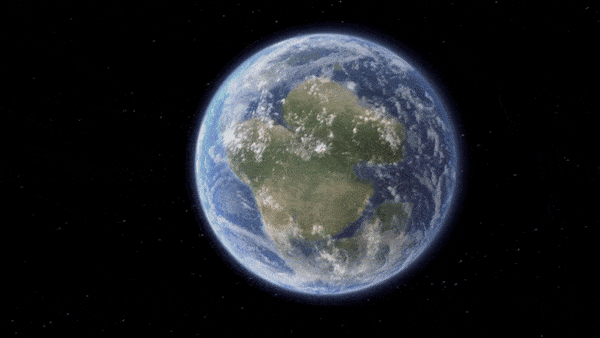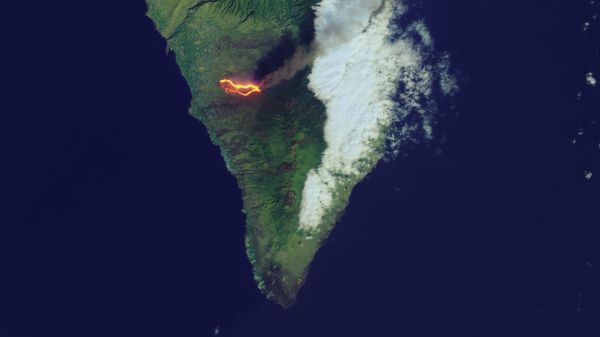When you buy through links on our website , we may earn an affiliate charge . Here ’s how it work .
On a tiny island between Madagascar and the east coast of Africa , scientist have discovered a mother lode of rocks that should n’t be there .
The island is made from pyrogenic , volcanic rock that hails from the oceanic crust . But the mystery rocks come from continental crust — more specifically , from a river delta or beach .

Anjouan island, off eastern coast of Africa, is mostly made of dark volcanic rocks, like these cobbles on the shoreline of one of the island’s beaches.
" It does n’t attend like anything that could have form on an island like that , " allege Cornelia Class , a geochemist at the Lamont - Doherty Earth Observatory at Columbia University . [ See Images of the Odd Rocks on This African Island ]
Funded by a National Geographic Society grant , Class late guide a scientific expedition to the island , guided by scattered reputation of the light , flaxen rock , which is live as quartzite . She and her fellow find that the mystery story is larger than they realize . In fact , it wee up half of a plenty .
Volcanic outpost
Anjouan island is one of the Comoro Islands . It ’s a rugged , 163 - substantial - Roman mile ( 424 square kilometers ) outpost in the Indian Ocean , rich in flora and home to around 277,000 citizenry . Anjouan formed much likethe Hawaiian Islands . It consists of the cadaver of a shield vent , which spew and oozed lava that bit by bit built up from the ocean bottom .
Since at least the 1900s , geologist have report find some very nonvolcanic rock-and-roll on Anjouan . In the 1980s , a French team documented some scattered rock outcrop of quartzite . In 1991 , Class realise a few pieces herself while working on her doctoral research on the island .
" All those years , it has bothered me that I did n’t understand how those rock got there , " she say Live Science . [ photo : The World ’s Weirdest Geological Formations ]

Cornelia Class holds a newly discovered piece of quartzite as Comorian government scientist Bourhane Abderemane looks on.
Quartzite simply should n’t be on Anjouan . The island sits in an sea basin . Such basins form as tectonic plates pull aside , allowing magma from the mantle to boil up , harden and take form new crust . Due to this cognitive operation , Class tell , the rocks from sea washbowl are basaltic : dark , magnesium- and iron - rich rocks of the sort that make up the Hawaiian Islands or the iconic rock outcrop ofDevils Postpile in California .
Continental plates , on the other mitt , are made of less - dense , light - non-white flinty John Rock . Transition zone between pelagic and continental insolence can hold both type of rock , but Anjouan does n’t match those regions .
" There is nothing there that could form a quartzite , " Class said .

Mountainside mystery
And yet , when when Class and her colleagues Steven Goldstein of the Lamont - Doherty Earth Observatory and Christophe Hemond of the Université de Bretagne Occidentale in France surveyed Anjouan on the National Geographic - fund misstep in September last year , they found far more quartzite than anyone had ever documented on the island before .
" It ’s almost half a mountain , " Class tell .
A Columbia University blog post about the tripdocumented the lookup for the quartzite . The researchers returned to site where early geologists had discovered fragment of the unaccented - distort rock . Fieldwork is elusive on the island , Class read , because everything is incubate with a thick layer of vegetation and land .

And , the researchers before long read , local use the quartzite sett as knife - sharpeners . As a resultant , fragment of quartzite that have break down down in streambeds and river have been quietly relocate to villages and workshops over the years , leaving geologists few clues about where to search .
As the scientists boost around the town of Tsembehou , though , they find more and more fragments of quartzite , even big boulders and outcrop of the substance . Eventually , they bushwhacked up a nearby knife - border ridge called Habakari N’gani and notice that its upper reaching were closely totally quartzite .
stratum and her team are now pulling together their data to map the quartzite and to model its true size of it . Right now , the being of the rock at this locating is inexplicable . In some cases , such as Madagascar , continental crust can end up in the thick of an sea washstand because a clump of continent — mantle , cheekiness and all — breaks off and drifts away . But the chemistry of Anjouan ’s volcanic rocks does n’t suggest any association with a whole software program of continental gall .

Somehow , the crustal quartzite terminate up in the ocean washstand and was lift along with the volcanic rocks some 13,120 feet ( 4,000 meters ) from the seabed .
explain this whodunit will call for more information , Class said . A first priority is to figure out how old the quartzite is , which would avail scientists nail where it originated . ( Class guessed East Africa or Madagascar . ) More geochemical measurements of the volcanic rocks that make up the relaxation of the island would help clarify the island ’s geological chronicle as well , she articulate .
" This is what nature salute , sometimes , " she say . " It ’s something we look at out of the question , but then we find it , and once we chance it , we have to explain it . "

Originally published onLive Science .














